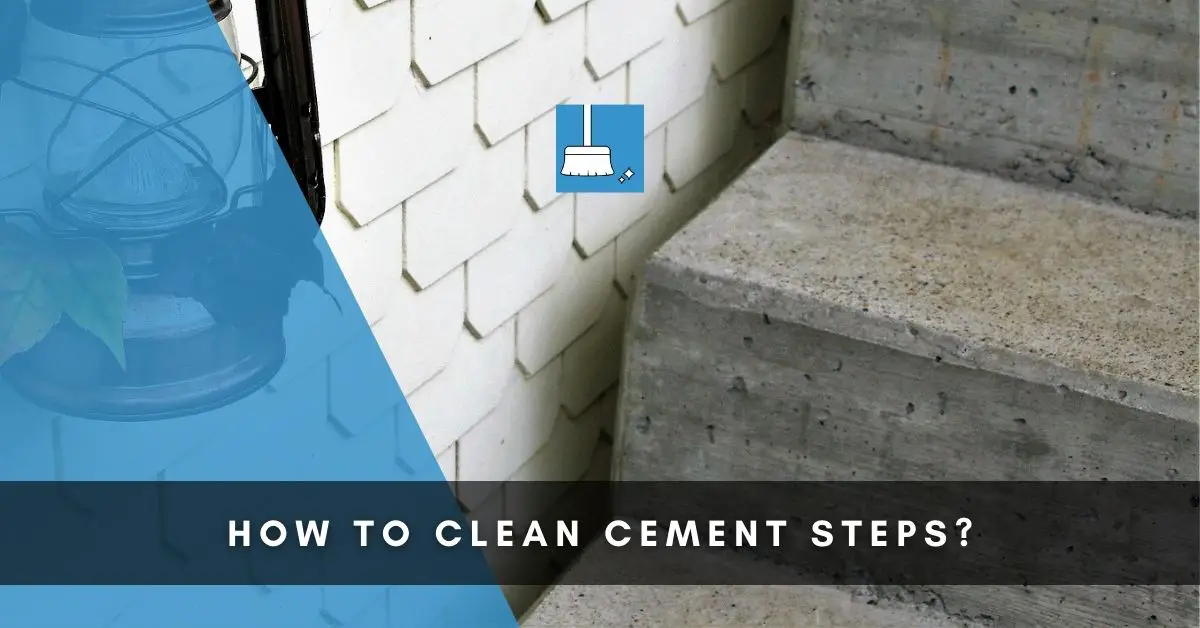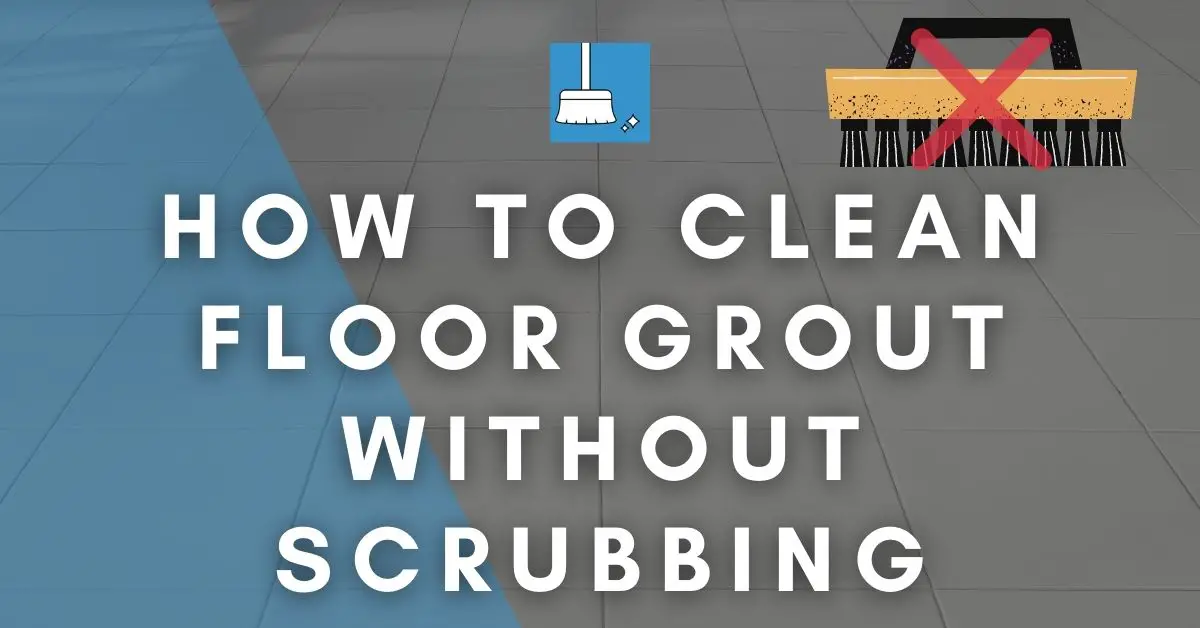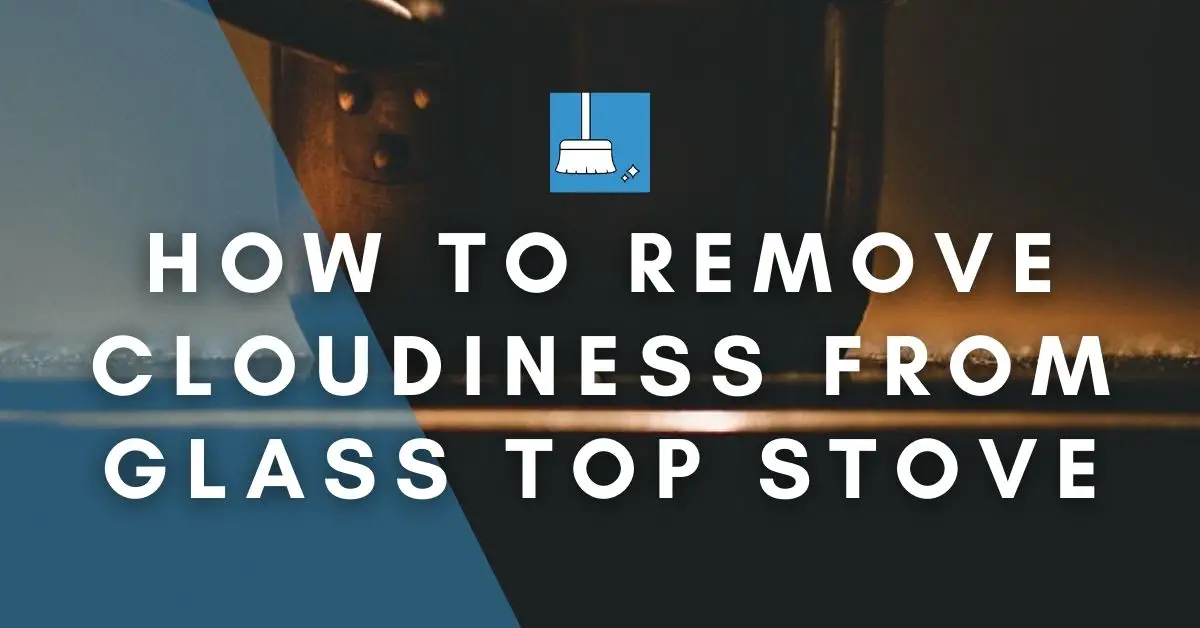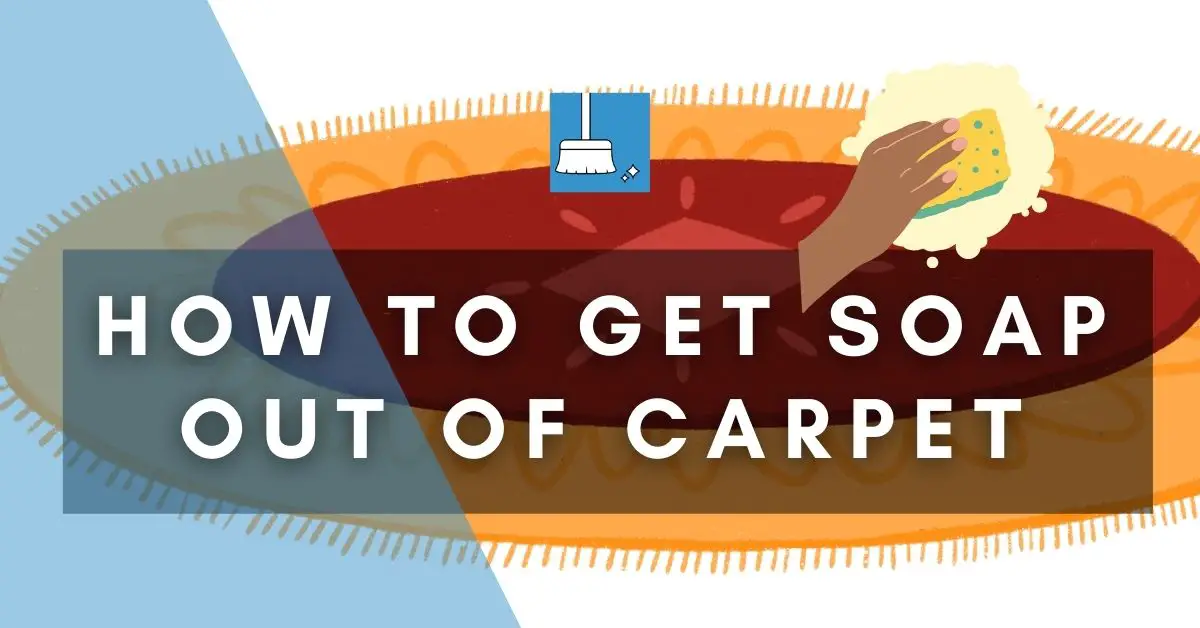Cement steps, whether indoors or outdoors, look attractive and enhance the overall look and decor of a home or workspace. When they are dirty, however, you don’t want to look at them as they absorb stains and get discolored over time.
If your cement steps are in this condition, we have compiled effective step-by-step ways you can clean your cement with and without a pressure washer.
How to Clean Cement Steps?
First, we’ll see the methods that don’t need a pressure washer as most budget families don’t own these. Later we’ll dive into the steps that do make use of a pressure washer.
Cleaning Cement Steps without a Pressure Washer
Pressure washers are good for cleaning cement/concrete surfaces, but not everyone has one. And sometimes, you just want to try something simple.
So here we’ll be explaining other ways you can clean your cement steps without bothering to turn on a pressure washer.
First, ensure you sweep the cement steps. Don’t clean your cement steps with water while it’s still dusty, and full of debris.
Method 1: Using Vinegar & Detergent
If you have plants or vegetation around your cement steps, then vinegar is the best solution for you. It is a natural household product so it won’t harm your plants, and you are also safe while using it.
Vinegar may look harmless but it is disastrous to rust and grease stains. It strips them from your cement steps, making your steps look as good as new.
NOTE: Always use white vinegar for this method, as Apple cider vinegar may stain your cement steps.
YOU’LL NEED
1- White vinegar
2- Detergent
3- Essential oil
4- Water
5- Spray bottle
6- Stiff brush
7- Bowl
8- Bucket
STEPS
STEP 1: Pour equal parts vinegar and water into a bucket. For rust stains and algae, you can use hot water.
Pour some dish detergent into the bowl (Just enough to clean your steps). Add one or two drops of essential oil to mask the smell of the vinegar. It can be quite strong.
STEP 2: Mix this solution thoroughly. Then pour it into a spray bottle. If you are working with hot water, don’t pour it into a spray bottle (you may injure yourself). Instead, use a small bowl to hold it.
STEP 3: Spray the solution onto the cement steps or use a small bowl to pour it. Ensure every part of your steps is covered and they are fully drenched with this solution.
STEP 4: Allow the solution to sit on your cement steps for about 20 minutes. Give the vinegar time to break the stains down.
CAUTION: Vinegar is acidic so don't let it sit on your steps for too long. This is not the solution that can be left on your cement steps overnight. It can begin to eat into cement.
STEP 5: Scrub the cement steps with a stiff-bristled brush. Pay attention to the stains and algae spots as more elbow grease is needed in those areas.
STEP 6: Rinse with water when you are done and repeat the process if necessary.
Method 2: Using Hydrogen Peroxide & Baking Soda
Hydrogen peroxide is an oxygenated bleach that whitens surfaces cleaned. If you have tough stains or discoloring on your cement steps, this is a good method for you.
Baking soda, a simple household product, breaks down stains and dirt. It loosens them up or sometimes soaks them up.
A combination of these two products can remove even the toughest of stains from your cement steps, and whiten the discolored ones.
YOU’LL NEED
1- Hydrogen peroxide
2- Baking soda
3- Dishwashing liquid
4- Water
5- Bucket
6- Bowl
7- Stiff-bristled brush
STEPS
STEP 1: Pour 1 gallon of hot water into a bucket and add 2 cups of hydrogen peroxide.
If your cement/concrete steps aren't really dirty, you can use 1 cup of hydrogen peroxide. For every cup of hydrogen peroxide, add 1/2 cup of dishwashing liquid.
STEP 2: Use a long stick to mix the solution well, and use a bowl to pour it on your cement steps. Ensure the steps are well saturated.
STEP 3: Spread baking soda on the cement steps generously. Let it react with the hydrogen peroxide solution and do its work. Leave it there for 15 to 20 minutes.
STEP 4: Scrub the cement steps with a stiff-bristled brush. If the solution has dried up, add more, and scrub thoroughly. Pay attention to discolorations and stains.
STEP 5: Wait for about 10 minutes after scrubbing and before rinsing. Then, rinse with enough water. You can use a long broom to sweep the water as you rinse.
Method 3: Using Bleach & Detergent
Bleach will not only clean dirt from your cement steps, but it will also disinfect them and kill mold or mildew that may be present on the surface.
Bleach will not harm your steps but can harm plants around, and also irritate your skin. So any plants around and wear protective gear.
Laundry detergent (like Tide) can remove stains and spots from cement/concrete surfaces. It will help remove all bleach residue from your floor.
This method is for very dirty and discolored cement steps.
YOU’LL NEED
1- Bleach
2- Tide detergent
3- Bucket
4- Water
5- Bowl
6- Brush
7- Long rubber gloves
8- Goggles
9- Face shield
10- Nose mask
STEPS
STEP 1: Wet your plants thoroughly so the bleach solution that accidentally splashes on them won’t kill them.
STEP 2: Wear old clothes as bleach can damage clothes and this can happen by accident while cleaning.
Wear long rubber gloves, a nose mask, and a face shield. Bleach often gives off fumes so a nose mask is necessary. Wear rubber boots (optional) because you may have to step on the cement steps to scrub.
STEP 3: Add 3/4 cup of bleach to a gallon of water. Mix thoroughly.
STEP 4: Use a small bowl to pour the solution on your cement steps. Pour it generously because it has to remain wet for about 10 minutes while you wait.
STEP 5: Let the solution sit for 10-15 minutes.
STEP 6: Scrub the steps with a brush. This may require some time if your cement steps are highly dirty or stained.
STEP 7: Add 1/3 cup of Tide detergent to a gallon of warm water and pour it on the cement steps you just scrubbed. Now let it sit for about 20 minutes.
STEP 8: Scrub again, and then rinse with water. Use lots of water to get rid of the bleach solution and soapy water.
That’s it! The cement steps should look clean now.
Method 4: Using Muriatic Acid, Ammonia, & Tsp
Trisodium phosphate works great at removing deep oil stains etched into cement while muriatic acid will brighten the overall look of the cement steps making them look attractive.
YOU’LL NEED
1- Muriatic acid
2- TSP
3- Ammonia
4- Bucket
5- Gloves
6- Face shield
7- Nose mask
8- Shop broom
9- Brush
10- Water
STEPS
STEP 1: Wear your gloves, face shield, and nose mask. Muriatic acid can be harmful when it touches your skin.
STEP 2: Pour 10 parts of water and 1 part of muriatic acid into a bucket and mix it thoroughly. Use a stick to do the mixing. You want to avoid as much contact as you can.
STEP 3: Use a nylon bristle shop broom to apply the muriatic acid solution to your cement steps. Make sure the steps are well saturated.
STEP 4: Allow the solution to sit on your floor for about 10 minutes. If the cement steps are very dirty, wait for 15 minutes.
STEP 5: Scrub the steps with a brush and rinse thoroughly. Repeat this process if necessary, until your steps start to brighten.
STEP 6: You need to totally get rid of the muriatic acid residue from your cement steps. To do this, you need ammonia. Get a clean bucket and mix 1 cup of ammonia with 1 gallon of water.
STEP 7: Rinse your cement steps with this solution thoroughly, until you are sure that the muriatic acid solution is gone.
Now that the overall look of your cement steps is enhanced, the areas with deep oil stains will be more visible. You will easily see stains that muriatic acid couldn’t get rid of.
And since it’s not advisable to spot clean with 100% muriatic acid, you need something else for those stains. This is where you need TSP.
STEP 8: Make a paste with Trisodium phosphate powder and water (A thick paste). And use an old toothbrush to apply the paste to the stains that are now visible on your cement steps.
STEP 9: Let the paste sit on those stains for about 15 minutes.
STEP 10: Use a brush to scrub those stains thoroughly. Then rinse with a generous amount of water. Your cement steps will not only look bright, but they will also be free from stains or discolored spots.
Cleaning Cement Steps with a Pressure Washer
Cleaning cement steps with a pressure washer is not difficult. The pressure washers come with instructions on how to use them and if you have one already, then you already know how they are used.
It is not only cement steps that pressure washers are used to clean, and the methods for each type of cleaning are sometimes slightly different.
So we’ll be listing a few things to keep in mind while pressure washing cement steps.
STEP 1: Sweep before you start
Before using a pressure washer on your cement steps, remove all objects and sweep all dirt and debris.
STEP 2: Treat
If the cement steps are very dirty, you can scrub them with soap and water solution or treat them with a concrete cleaner.
Pour 2 cups of your choice of detergent into a gallon of warm water. Use a shop broom to apply it to your steps and scrub with a bristle brush. Leave it for 5 minutes.
STEP 3: The Right Pressure washer
The next step is to pressure wash the cement steps. Not all pressure washers can work. And even if yours is the right one, you have to set it right.
Your pressure washer must have a pressure rating of at least 3000 psi. The flow rate must also be at least 4 gallons per minute.
Anything less than these specifications and you may not get the result you desire. The nozzle should also be about 25 degrees.
For the pressure washing, put your pressure washer on rinse mode and use it in a sweeping motion; taking it back and forth.
The nozzle should be at least 8 inches from the cement steps for regular cleaning and about 4 inches for stains and very dirty areas.
Your cleaning should start from the top of the stairs and finish at the bottom.
Final Thoughts!
Depending on where your cement steps are located and the kind of traffic in the area, they can be dirty in varying degrees.
They could have stains, discoloration, spill marks, etc. No matter the kind of mess on them, the methods shown in this article can get rid of most stains and discolorations. Whether you are looking to do some light cleaning or your cement steps need deep cleaning, there’s a method up there to suit your purpose.
To maintain your cement steps and have less use for chemicals, ensure you clean regularly and clean all spills immediately.





